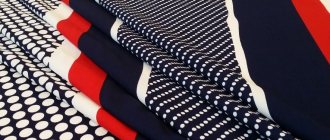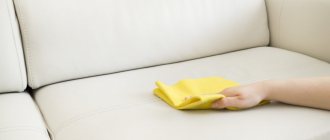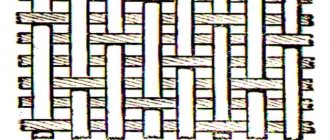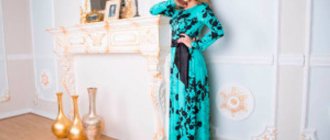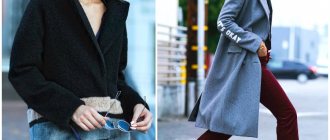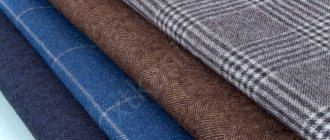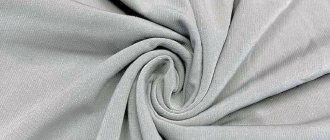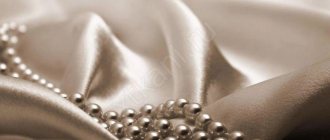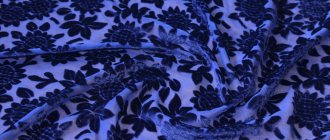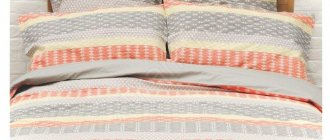Calico, a material with such an interesting name is used to make a light, natural fabric that we all know as chintz. Products made from chintz are presented in large quantities in stores and are in demand. In this article, we invite you to read a brief description of the appearance of this fabric, its features, advantages and disadvantages. You will also get acquainted with the options for using this material.
The journey of calico fabric began in India, and traders brought it to Europe. Due to the high price of the material, craftsmen began to copy the patterns, and chintz became famous all over the world.
Properties and characteristics
Let's start the review with a definition. What kind of fabric is chintz - this is a lightweight material, invented by Indian craftsmen in the eleventh century, made from harsh calico threads, which are obtained from cotton. Density is 80-100 g/m2.
There are two varieties:
- Printed - with a pattern;
- Plain colored (plain color).
Initially, calico threads are gray, untreated. The canvas gets white color after processing. Let's look at the main characteristics of chintz:
- The weaving is plain, the warp and weft threads are connected according to the “one through one” pattern;
- Density is 80-100 g/m2.
Manufacturing technology
What is chintz made from? The stages of creating fabric are as follows:
- Cotton seeds with hairs are collected, then fiber is made from the seeds.
- Next, the cotton is cleansed from all possible mixtures, additives, and dirt.
- Fiber is obtained from the boxes on machines, fed under a press, and twisted into a single thread, approximately 10 mm.
- The resulting threads are again woven together in a special way: plain weaving, due to which it is the same on both sides, determined after printing the print. This is how chintz is obtained, the composition is always the same.
- Boards with embossed patterns are intended for applying designs to a white canvas.
Today, the manufacturing process has been somewhat simplified; with the help of machines and machines, the entire creation sequence is faster and of better quality.
Let's briefly talk about the main stages of production:
- Collection of cotton fibers;
- Sorting and cleaning;
- Carding of fibers and preparation for spinning;
- Direct spinning;
- Machine weaving;
- Painting canvases.
The result is a bleached or dyed material!
Additionally: Jersey fabric - what it is, read in another review.
Take a look at the photo of chintz fabric to see the variety of colors and shades. Now you know what chintz fabric looks like, what features it has - it’s time to talk about positive and negative qualities.
Historical facts
Many people know what chintz looks like and why it is well known, but not everyone knows the history of its appearance. Therefore, we have provided a brief historical background.
Calico fabric was first invented and began to be produced in India back in the 11th century. The fabric came to Russia closer to the 17th century and began to be produced at the well-known Ivanovo manufacturing plant that is still operating. During the Soviet Union, everything was made from chintz: clothes, underwear for men and women, bedding, and even flags.
To this day, chintz remains a popular material among housewives and lovers of natural, beautiful fabric.
Advantages and disadvantages
We have already figured out what chintz fabric is made from - it’s time to talk about the features. The next important part of the review is the advantages and disadvantages of the canvas. It is these indicators that play a decisive role when purchasing finished products or rolls of material.
First, let's talk about the advantages:
- You already know that chintz is a cotton fabric. This ensures environmental friendliness and natural fibers;
- The color remains bright, the pattern does not fade;
- Does not cause allergic reactions;
- Very easy to use and maintain;
- Easily allows moisture and air to pass through, ensuring proper heat exchange;
- It has a low affordable price per 1 meter with excellent quality;
- Buyers have access to a huge selection of products that are used in a variety of areas - more on this below.
Be sure to read: Oxford fabric - what it is and what its properties are.
Take a look at the photo to see what chintz fabric looks like - it really is an attractive, bright textile. But it also has some minor disadvantages, let’s note them in more detail:
- Deteriorates when exposed to high temperatures;
- Wrinkles easily - be sure to iron before use;
- Natural fibers wear out quickly and the appearance can quickly deteriorate.
You know the characteristics and composition of chintz fabric - evaluate all the pros and cons, and then go to the store! And now it’s time to talk about what you can sew from chintz yourself or buy in a store.
Read more about similar matters:
- Denim fabric - description and properties;
- Ranfors fabric - composition, reviews;
- What is rib material?;
History of chintz
Despite the fact that chintz is considered an original Russian “product” of weaving, this is not entirely true. In our country, chintz appeared only in the 18th century, but in India it was known back in the 11th century. The city where he was born is Calicut. From there, over the course of several centuries, it was “sent out” throughout the world.
In the 15th century, there are references to the fact that calico heel appeared in Egypt. Indian craftsmen began to gradually settle in different countries. They appeared in the 17th century in Marseille, Nîmes and Avignon. They discovered a unique technology for creating printed fabrics.
Initially, chintz was far from a budget material. And it's all about hand stuffing. Later, when multi-color printing presses appeared, the cost problem was solved. The canvas turned out to be brightly colored. At the same time, the color was not only beautiful, but also durable.
Chintz gained particular popularity in the USSR during a period of shortage. There were no special funds, and the range on the market was small. In this regard, the cheerful multi-colored material delighted fashionistas with its price and variety.
Russia is famous for its calico calicoes. Their peculiarity lies in the printed pattern against a bright red background. Another point that distinguishes it from other materials is the coloring method. Madder root was used for this. The composition destroyed the color of the base, while creating a pattern of a contrasting shade.
Another important moment in the history of Russian chintz was the 70s of the 19th century. Natural dyes were replaced by chemical ones. This affected the color of the products. The shades have become richer and more saturated. The largest production in Russia belonged to the merchants Baranov. They launched the production of calico calico. In Soviet times, the production began to bear the name “Combine named after the Third International”. Well-known Russian manufacturers include the Morozov, Tretyakov, and Prokhorov families.
The material, unlike its Indian ancestor, had an unusual composition. It was not a monotonous geometric design, but simply works of art. The canvas reflected a whole story: the history of the village, Russian nature and the country as a whole. It was a painting on fabric. She not only had a great story, but also a soul.
Usage
Above we described in detail what kind of fabric chintz is. It is the properties of the material that determined the breadth of its use:
- Men's shirts;
- Baby diapers;
- Bed sheets;
- Covers for decorative pillows;
- Curtains;
- Furniture covers;
- Underwear and homewear;
- Tablecloths and other kitchen textiles;
- Towels and home textiles;
- Kids' things;
- Women's clothing - dresses, blouses, sundresses and more.
Useful: types of fabrics for bed linen and their characteristics.
We talked about what is good about this type of fabric, and found out what people sew from it - by hand or in production. And next in line are the rules and recommendations for caring for purchased items.Scope of application
Chintz has found its place in many areas of life. Today it is difficult to imagine textile production without it. It is used to make various products.
| Application area | Description |
| Summer clothes | Dresses, shirts, trousers, sundresses can have a variety of shades. Most often they are colored, but plain models with various decors also look stylish. |
| Kids' things | Almost 90% of the assortment for children consists of chintz. Due to its hypoallergenicity and good breathability, it is even used when sewing nappies, diapers, and baby vests. |
| Outfits for home | House dresses and robes, of course, will not last long due to frequent washing and everyday wear. But the low price corresponds to the service life of the products. |
| Sleepwear | Sleeping in cotton pajamas or nightgowns is a pleasure. The material does not slip and provides good heat transfer. |
| Kitchenware | Potholders are often made from fabric. Kitchen towels are very practical because they absorb moisture very well. At the same time, they themselves do not get wet. |
| Textiles for table setting | Miniature napkins can make your table decoration sparkle with new colors and dilute the severity with cheerful colors. Embossed tablecloths on a flat surface look aristocratic, but not pretentious. |
| Bed dress | Duvet covers and sheets provide comfort while sleeping. Even on the hottest summer nights they will give you coolness. They can be plain (pink, blue, white) or have a pattern. |
| Home textiles | Polished curtains will provide a reliable level of sun protection. Covers for armchairs and sofas will last a long time and do not require complex care. Pillowcases for decorative thought pillows are often made from this type. |
| Decoration Materials | And in this category, chintz has found its rightful place. They decorate the walls. This coating is valued for its varied design, environmental friendliness, and ease of finishing. |
| Needlework | Skilled craftswomen make many crafts from fabric: rag dolls, toys, appliques, patchwork-style products. |
From history: It is no coincidence that the first wedding anniversary is traditionally called calico. The newlyweds, who lived separately from their parents, began to independently furnish their home. To help them with this, guests gave chintz: towels, bedding sets, tablecloths.
Rules of care
Calico material is very easy to care for - it is enough to follow the simplest rules to preserve all the features of the item. We will tell you what recommendations you should follow to avoid unpleasant situations!
- You can wash natural fabric by hand in warm water or in a machine;
- Before first use, you need to wash the product in cold water by hand - this will help soften the material and preserve the brightness of the colors;
- To avoid the appearance of rigidity in the structure, it is worth washing the canvas with other cotton fabrics;
- If you don’t want to worry about things shrinking during washing, choose the correct temperature setting for the machine – fifty degrees;
- Be sure to turn things inside out;
- To preserve color, you should use soft powders and gels and avoid bleaches;
- In order to avoid shrinkage after washing, it is worth drying the fabric in a straightened form in a dark, cool place;
- Items must be ironed - you must first moisten them with water. You can use steam to quickly remove wrinkles.
Read useful tips on how to remove green stains from clothes in 1 minute.
Now let's talk about how calico differs from chintz and satin - many often confuse these types of material. Also find out the composition of bumazea at the link, it’s very interesting.
Advantages of popular matter
Among the advantages of chintz are:
- Easy to care for. It does not require special means or long soaking.
- Large range of shades. As a result, you can choose products to suit any ensemble.
- Ease of processing. The material is easy to sew and cut. But you should remember that it does not stretch at all, so when cutting you need to leave a few centimeters in reserve.
- Wide scope of application. The fabric can be used for various purposes, and its functionality will always be at its best. You just need to choose the right type.
The low cost should also be mentioned. The most common fabrics are with prints. Their prices start from 100 rubles per meter. But you can buy cuts cheaper. So, plain varieties will cost 40-50 rubles, with simple, light patterns - 60 rubles. The most expensive material is the one with abstract colors. For a meter of such fabric you will have to pay about 150 rubles.
For reference: Initially, calico fabric was very expensive. This was explained by hand-printed ornaments. After automation of the production process, textiles fell sharply in price. This explains its popularity during times of total shortages in the Soviet Union. The prices for the canvas were low, and it always looked bright.
Differences
Above you read the description and photo of chintz fabric - which means you remembered that it is made from cotton fibers. Cotton is used to produce materials such as calico and satin. It's time to talk about how they differ.
First, let's discuss the difference between chintz and calico - the difference lies in the method of weaving the threads. Weaving affects the density and weight of the material!
| Chintz | Calico |
| Low thread density | Weaving threads alternately, there is additional overlap in each of the two weaves |
| Light weight and soft | The structure is dense, there is no looseness |
| For one cm2 of fabric, 30-40 threads are used | For one cm2 of fabric, 45-65 threads are used |
| Weight m2 is 100 g | Weight m2 is approximately 110-145 g |
| Shrinkage under water is 5% | Shrinkage reaches 7% |
Let us briefly note how satin differs:
- Satin does not fade and easily tolerates high temperatures;
- Does not shrink and does not require ironing;
- It has a pleasant shine and smooth surface.
Let us note what is the difference with cotton, is it the same thing or not. Cotton fibers form the basis for the production of linen, but they cannot be called analogues. We described in detail the composition of microsatin at the link.
Types of fabric
Calico fabric can be plain-dyed, printed, polished, embossed and with a “corrugated” effect.
Plain-dyed chintz
Plain-dyed chintz is a thin, light, but quite durable material, which is mainly used to create bed linen, pajamas and nightgowns.
Chintz is called plain-dyed because the material is dyed in one color. Fabric is thrown into special tanks with boiling dye pigment and boiled until completely dyed. Plain-dyed chintz is not afraid of high temperatures. Products can be washed at temperatures above 60 degrees.
Properties:
- natural hypoallergenic fabric;
- breathable;
- does not fade or lose its color when washed;
- does not fade in the sun.
Standard fabric sizes: width – 80-150 cm, length – 70-100 meters.
Polished chintz
The material is wear-resistant and particularly durable; it is used for sewing curtains and producing upholstery for furniture.
Calico
When producing printed calico, cotton is not bleached or completely purified.
Fabric is softer and stronger than canvas, but much cheaper due to poor cleaning.
Embossed chintz fabric
The material is made using hot stamping technology. Used to create high-quality wallpaper and tablecloths.
Calico fabric with corrugated effect (reaper)
Cotton fabric, which is created by plain weaving. Thermal and chemical treatment, as well as a special painting method, create a corrugated effect on the material.
Reviews
Customer reviews confirm that the quality of the material has increased significantly in recent years. Now you also know what chintz fabric is, and you can decide to buy a towel, shirt or dress.
Yana: I really love chintz! What a large assortment of sundresses and dresses you can sew for yourself for the summer! And what a choice of colors...oh! Even if I don’t come to the store, my hands always reach out to him! If you are still learning to sew, I advise you to practice on it! For example, sew a sundress or a dressing gown. Alina: For me, chintz is the ideal material for the summer! It allows air to pass through perfectly and also removes moisture well! I also love the way it sits on the figure and that. that it has many interesting colors, just for the summer) In general, I recommend it to everyone)))
In a nutshell about the composition
The fabric is completely natural. That is why, despite its simplicity, it is so highly valued. It contains no artificial or synthetic fibers. It will not harm allergy sufferers or people with sensitive skin. In addition, this is the best option when choosing products for children, including newborns.
